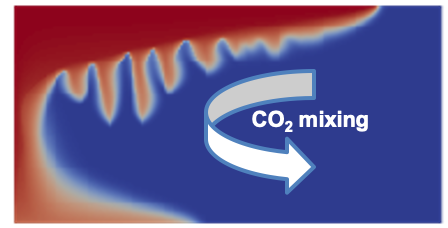Project CHI: Fundamentals of CO2-Hydrocarbon Interactions for CO2 storage

Mykkeltvedt, Gasda & Sandve, Transport in Porous Media, under review, 2020.
Project CHI has carried out basic research on CO2-hydrocarbon interactions for CO2 storage in oil and gas reservoirs that could fundamentally alter the ability to recover trapped hydrocarbons while simultaneously maximizing CO2 storage. The project has focused on two processes, convective mixing and wettability, which were chosen because recent experiments show compelling results that may have a significant, yet still largely unknown, impact on field-scale fluid flow (recovery) and trapping (storage). Convective mixing of CO2 in oil is caused by density variations in CO2-oil mixtures. It increases the mixing of injected CO2 with the oil, and this also modifies the mobility of the oil (recovery). Wettability is the preference of one fluid to be in contact with the rock surface over another. This impacts the capacity of the rock to trap CO2. However, wettability can change over time.